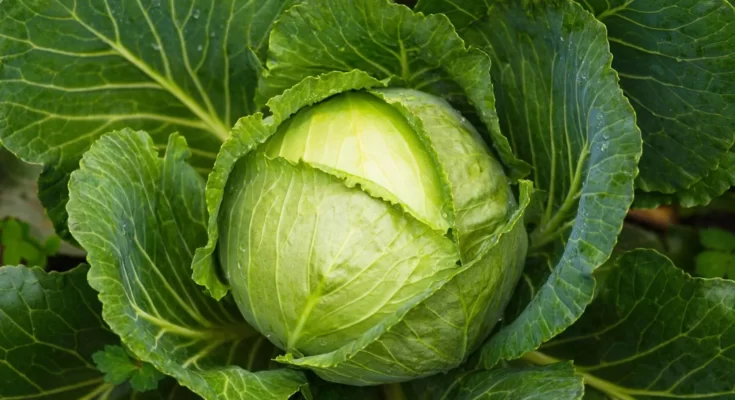Savoy cabbage is a versatile cabbage, like green cabbage, but is barely milder and sweeter, with leaves looser and further ruff. It is slightly extra pricey than not unusual cabbage.
<strong>What Is The Best Part Of Montana To Live In?</strong> | <strong>What Is Sweet Dumpling Squash?</strong>
Savoy cabbage is a green, leafy vegetable made from crinkly, lacy leaves with unfastened, rounded ends. It is classed as a cruciferous vegetable, which means it’s miles a member of the botanical circle of relatives, as well as vegetables which includes cauliflower, broccoli, Brussels sprouts, and bok choy.
Savoy cabbage is named for the Savoy location in France within the Western Alps, which borders Italy and Switzerland, which is assumed to have originated. Although it’s far to be had 365 days spherical, the icy variations are milder and sweeter than those grown during the summer season, which can be piece overpowering.
Savoy is a versatile cabbage in that it could stand in for each of the easy inexperienced cabbage, which resembles Napa or Chinese cabbage, in addition to the thin, frilly leaves that aren’t unusual. It may be eaten uncooked, pickled, fermented, or cooked. Although uncooked Savoy cabbage isn’t as crispy as inexperienced cabbage, it has a better texture when cooked, so even unseasoned cabbage has a tendency to be barely easy.
Accumulate more informative facts here at https://mixbu.com/
How To Use Savoy Cabbage
One of the exciting subjects about Savoy cabbage is that the feeling of the leaves changes from the outdoors to the center. The outer leaves are frilly, green, and sensitive, but, the inner ones are faded yellow, enterprise, and crunchy. That is, the outer and internal leaves can be used for various things. Wrap the outer leaves around meats and grains and then fry them in tomato sauce. And use the internal ones for braising, stir-frying, or frying in butter or bacon fat. Like all cabbages, savoy is nice served uncooked in salads and slaws, in which a combination of the internal and outer leaves will offer a high-priced texture.
Savoy cabbage is a wonderful ingredient in soups, shredded and blended with pasta, pickled and fermented to make sauerkraut, brought to casseroles, and mixed with roasted root vegetables.
Accumulate more informative facts about how to mix bleach for hair
To prepare Savoy cabbage, soak the complete head in water in hopes of doing away with any dust, grit, or insects, however, it is a superb idea to cut up the leaves and rinse them one by one. Remove any thick, woody stems from the outer leaves.
How Does It Flavor?
Savoy cabbage has a medium, sweet, vegetable flavor with a much less tangy taste than inexperienced and crimson cabbage. Because of its commonly truthful flavor, Savoy cabbage pairs equally salty and rich with substances that encompass beef, duck, and bacon with little fish and seafood.
Meals Cost
One hundred-gram serving of raw inexperienced cabbage is ready with 91 percent water and offers 27 grams of power, 2 grams of protein, 6 grams of carbs, and 3 grams of dietary fiber, similar to negligible fat. It likewise components Vitamin C and Vitamin K.1
Savoy Cabbage Recipe
Savoy cabbage is flexible and can be crumbled, grilled, braised, and used in salads. Here is a sampling of recipes that can be arranged with the usage of Savoy cabbage, highlighting the many cooking techniques.
Savoy cabbage can usually be placed inside the grower branch of any supermarket. They also can be discovered at farmers’ markets every so often, especially in the spring and fall. Look for ends that can be a business enterprise and are heavy for their length. They should be brilliant and brightly colored, and the outer leaves ought to not be brown or discolored.
Storage
Before reducing, hold an entire uncovered head of Savoy cabbage in the crisper drawer of the refrigerator for up to 2 weeks. Once cut, wrap it tightly and store in a crisper drawer and use it for two to a few days. Do now not wash savoy cabbage simply before use, as wetness can boost spoilage.
Savoy Cabbage Vs. Napa Cabbage
Savoy cabbage is sometimes troubled with Napa cabbage, due to the fact that they both have ruffled, lacy leaves. Napa cabbage, also called Chinese cabbage, has a barely more peppery kick, even though their makes use of are similar. The simplest way to inform them apart is that Napa cabbage is rectangular in shape, while Savoy cabbage is rounded.
What Is Savoy Cabbage?
Savoy cabbage is a green, verdant vegetable that fills in free, round heads comprised of creased, elegant leaves. It is named a cruciferous vegetable, and that implies that it is an individual from the plant family Brassicaceae, alongside veggies, for example, cauliflower, broccoli, Brussels sprouts and bok choy.
Savoy cabbage is named for the Savoy district of France in the Western Alps, along the lines with Italy and Switzerland, where it is accepted to have started. In spite of the fact that it is accessible all year, the colder time of year variants will generally be milder and better than the ones that are filled in the late spring, which can be a touch more vigorous.
Savoy is a flexible cabbage in that it can sub for both conventional green cabbage, which it looks like because of its round shape, as well as napa or Chinese cabbage, whose more slender, frilly leaves it likewise shares practically speaking. It tends to be eaten crude, cured, aged, or cooked. Albeit crude savoy cabbage isn’t exactly as crunchy as green cabbage, it holds its surface better when cooked, though green cabbage will in general turn a piece soft.
The Most Effective Method To Utilize Savoy Cabbage
A fascinating aspect concerning a savoy cabbage is that the leaves’ surface changes from the external towards to the center. The external leaves are frilly, green and fragile, however the deepest ones are light yellow, firm, and fresh. That implies the external and inward leaves can be utilized for various things. Fold the external leaves over meats and grains and afterward stew them in pureed tomatoes. what’s more, utilize the inward ones for braising, pan-searing, or sautéing in spread or bacon fat. Similarly as with all cabbages, savoy is flavorful served crude in plates of mixed greens and slaws, where a mix of internal in addition to external leaves will give magnificent textural contrast.
Savoy cabbage is a brilliant fixing in soups, destroyed and blended in with pasta, salted and matured to make sauerkraut, added to meals, and joined with broiled root vegetables.
To prepare savoy cabbage, absorb the entire head water in order to remove any soil, coarseness, or bugs, however best is to dismantle the leaves and flush them independently. Dispose of any thick, woody stems from the external leaves.
What Does It Have An Aftertaste Like?
Savoy cabbage has a gentle, sweet, vegetal flavor with less of the peppery flavor related with green and red cabbage. On account of its somewhat nonpartisan flavor, savoy cabbage coordinates similarly well with pungent and rich food varieties like pork, duck, and bacon similarly as with gentle fish and fish.
Healthy Benefit
A 100-gram serving of crude green cabbage is around 91% water, and gives 27 calories, 2 gram of protein, 6 grams of carbs and 3 grams of dietary fiber alongside insignificant fat. It is likewise a wellspring of L-ascorbic acid and nutrient K.1



